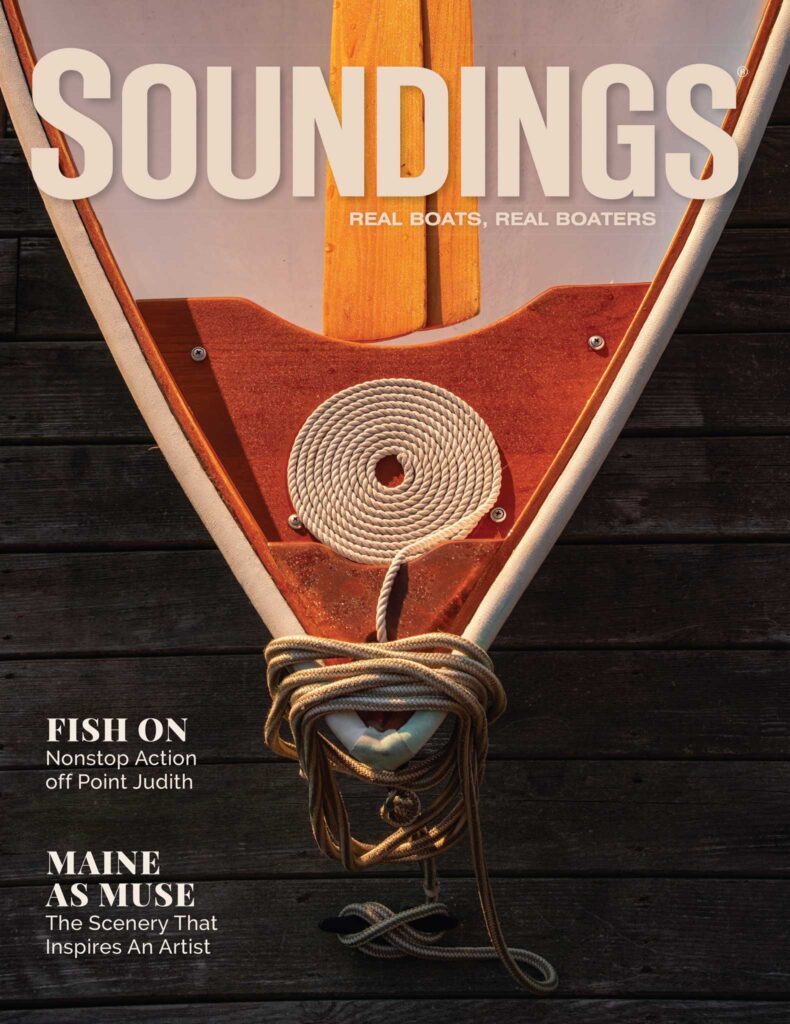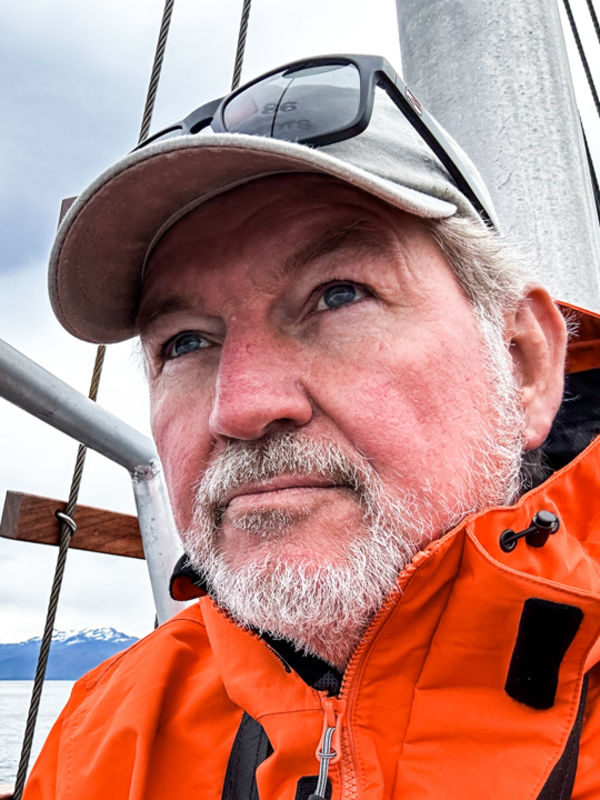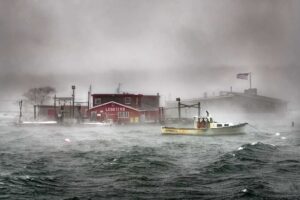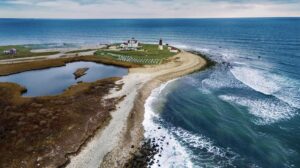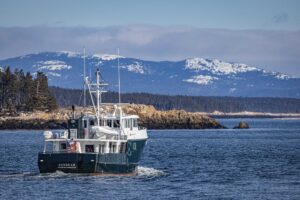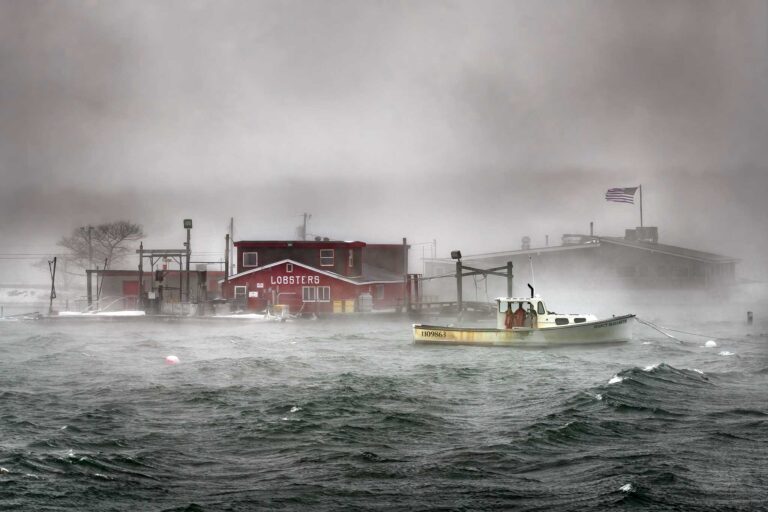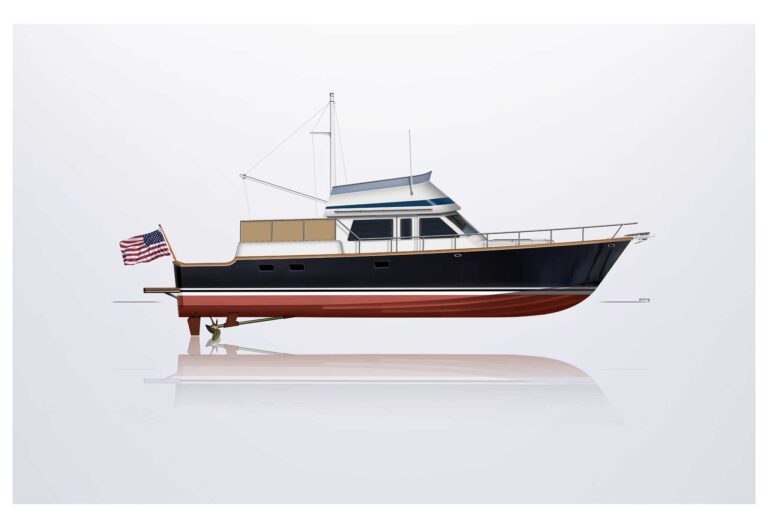Life Proof Boats CEO Micah Bowers likes to make videos. Around the time the company was founded in 2016, he jammed a pocketknife, a speargun, a machete and an arrow into the foam buoyancy collar on one of its boats. He also clobbered the collar with both ends of an axe and then grabbed a Stihl chainsaw. All of this was captured on a YouTube video, except for the part with the chainsaw. Asked why that part was blacked out, Bowers laughs and admits that the chainsaw wouldn’t start.

Bowers grew up on Puget Sound’s Bainbridge Island where he says boating was part of the lifestyle. During college summers he worked in the Alaskan fisheries and after getting his mechanical engineering degree at Gonzaga University he worked in Hawaii. When he learned SAFE Boats in Bremerton, Washington, was looking for an engineer, he jumped at the opportunity to get into boat manufacturing. In 2014, he went to Inventech Marine Solutions (IMS), which launched the Life Proof brand in 2016.
Bowers says the foam collars on Life Proof Boats act like life jackets that stabilize the aluminum hulls, which are built for performance in rough and unforgiving seas. Although Life Proof Boats are popular among law enforcement and military agencies around the world, the company started out building recreational boats. The boats have shock-mitigating seats and self-bailing decks that will fully clear in under two minutes. Life Proof also fills every void in its hulls with foam, which Bowers says makes the boats virtually unsinkable.
The company offers models in a variety of styles and lengths, from an open 17-foot center console to a 50 Full Cabin that will join the line in 2022 with triple 600-hp or quad 425-hp outboards. Its latest launch, the 41 Full Cabin, premiered in 2021 and followed on the heels of the 35 Full Cabin.

The 35-year-old Bowers is almost obsessive about the functionality of everything on Life Proof’s boats. That attention to detail is clear on Life Proof’s videos, where he speaks authoritatively about everything from propulsion and fuel burn to lithium batteries and the adjustability of Shockwave seats. Soundings caught up with Bowers at one of the company’s four facilities in Bremerton, Washington.
What was the inspiration for Life Proof Boats? The company was originally started as IMS when we started prototyping and building demo hulls. But people were
asking us to build boats. It went from IMS to a boatbuilding company, although that was not the original intent. Our early boats were all recreational boats, but as people started to see us, the local police stations began asking us to build boats for them too.
How did the Life Proof name come about? We wanted a name that would resonate and tell people that the boat could handle whatever came your way. We wanted to draw a response and imply that the boat was built to take on anything.
You’ve constructed boats with 100 percent air-filled tubes, solid foam collars and your patented air and foam hybrid collars. What are the advantages of one over the other? One hundred percent air is fine. It gives a safety factor, but they can deflate. So, we created the hybrid, which is a suspenders-with-a-belt, because the foam would also be there for you if your tube was punctured. We don’t do a lot of the air and hybrid anymore as there’s a progression towards all foam. We do air and foam hybrid retrofits, but as far as new builds go, the all-foam collar has so many advantages. One is that everybody wants more space inside their boat. The all-foam collars have a D-shape, so you get half of the collar back, which gives you more beam inside the hull.

Some people are apprehensive about boats with tubes or collars. What do you say to them? I ask them who they call when they need help. They’ll say they call the Coast Guard or a towing company. And I ask them, “What kind of boat are they in? Aren’t you going to feel a lot better when you’re in the same kind of boat? Don’t you want that kind of product to put your family in?”
Did you make the video where you stab the foam collar with various sharp implements to drive home that point? That’s an old video. We’re going to do one with a pistol to show that a 9 mm bullet won’t penetrate through the collar into the aluminum of the boat.
Why do you build in aluminum? It’s strong. With the aluminum we use, it’s not the same as a run-of-the-mill bass boat. The grade we use in our commercial and recreational boats is a U.S. Navy and Coast Guard-required alloy called 5086. It takes craftsmen to build in aluminum. Everything is hand-trimmed and hand-welded. It’s the backbone of our product and our welders are the best. Aluminum is also easy to manipulate later in life if you want to add a downrigger or a cleat.
Your boats seem perfect for the Pacific Northwest, the Northeast and the Maritimes, and they’re available with air conditioning. But isn’t aluminum hot in warmer climates? Aluminum boats have to be well insulated. We do a fair bit of warm-weather sales. We have five boats that will be in Saipan. We have big center consoles in Hawaii. One thing I have learned about the Southeast is that when wives go out, they want wind and spray protection. Our GT Coupes do well there.
Why did you build a convertible boat? We did a convertible to see if we could do one for use all around the U.S. It has a hard top made of fiberglass to help with thermal conductivity. It’s easy to remove in under an hour. We’ve only built the one to see if the Coast Guard might be interested. The Coast Guard will be here soon, and the convertible will be sitting next to the boat we’re building for them.
How did the performance fins come about and what do they do? We’re performance-minded. The boat has to hold a corner like a race car and not slide out. We do a lot of fins, so the boat drives like it’s on rails. The fin at the back of the boat was designed for cornering. When the boats corner, they stay perfectly flat, which also protects the tubes. The forward fin was added because we were trying to pioneer something for big water broaching conditions. At low speed you can turn the wheel four full cranks over, punch the throttle and the boat pulls itself around the fin. It gives it a pivot point.

Life Proof seems to be power agnostic. You build with inboards, gas outboards, diesel outboards and jets. Is there any propulsion source you won’t use? We are building a new 35 with a pair of 600 Mercurys. Top speed will be at least in the low 70s (mph). A boat we’re building for the Coast Guard is inboard diesel with a waterjet. We just delivered a center console with a Volvo Aquamatic sterndrive with a slip clutch on it. And we have a new design we’re building for a good repeat client. It will be 43-feet long and 14-feet wide with a dramatic 60 degrees of bow entry deadrise. It’s going to have the new MAN 850 diesels with waterjets. It’s going to be in the signature Yachtline.
What’s the distinction between the Pleasure Class and the Yachtline series? Basically, it’s about finish and love. On the Yachtline we go crazy with the fairing, the paint, all the touches. The Yachtline is our flagship where we do progressive ideas that trickle down to the other models. You see that in the 35.
The 35 Full Cabin and 41 Full Cabin seem to have struck a chord with boaters. What’s next? The first 35 was delivered in 2020. We’re now on our fifth 35. We’ve been working almost three years on designing this particular boat. The client is a photojournalist. He is going to take it to the San Juans for two weeks, then we’ll finetune it at our facility and ship it to Duluth, Minnesota, for a Great Loop trip. It will then go to the 2022 Newport Boat Show. The first 41 was delivered in February 2021. That client wanted a custom hot tub in the bow. For the second 41 we were able to refine the design. That boat is what the 41 will be layout wise going forward. The 50 is the next iteration. That boat will hit the water in June of 2022. It will go to Maine. It will also be launched in Duluth for the Great Loop Cruise and be at the Newport Boat Show.
The 51 is depicted on your website with surfboards mounted over the outboards. You also install dinghies over the outboards rather than on top of the cabin top. Why do you put them there? There are a lot of advantages to placing them over the engines. It lowers the windage and the center of gravity and it’s the place with the least vertical acceleration. It’s also the safest place for the dinghy and it doesn’t take a super tall davit to launch it. Since we started doing it, other Pacific Northwest builders have started copying it.
For decades, the Pacific Northwest has been known for tug-style trawlers, but with the exception of the collars, Life Proof Boats seem to have a lot in common with boats built by Lindell and Coastal Craft. They have the rugged Pacific Northwest look, but they also have plenty of speed and versatility. Is this because of the advances in outboard technology? It’s a dynamic of the population and how they use the boat. We are building what the clients are looking for. Our new 41 is parked right next to the new Coastal Craft 41. They are side by side. The owners are good friends, but they wanted different things. They are drastically different. Our 41 does over 60 mph at around 1 mpg. We have amenities, but we are focused on functionality. Other brands are focused on amenities and luxury and not as much about performance, and obviously we are safer because of the collar.
Do you have a typical client? We have a diverse clientele. We get a lot of unique people, but they all love the facet of safety, and that is why they come to us. They want something safe and strong.

Life Proof Boats has doubled in size every year since its founding in 2016 and you’ve just added a fourth facility. How quickly is the recreational side of the business growing? This year we are at least 50 percent recreational sales. Next year it’s more like 70 percent. We are now at just over 60 employees, and we have a two-and-a-half-year backlog in orders. Forty percent of our sales are in the Pacific Northwest. Right now, we only build about 30 boats per year, but we want to do more sales in Florida. We want to hit the four corners.
Judging from the videos, you seem to have a lot of fun at your job. We’re never bored. We do all the custom designs and new designs. I spent yesterday designing the rear bench for the next iteration of the next boat and we have a client in Newport who wants an electric sunroof. It’s stressful, but there’s a lot of fun to it and we get to be creative.
For decades, the Pacific Northwest has been known for tug-style trawlers, but with the exception of the collars, Life Proof Boats seem to have a lot in common with boats built by Lindell and Coastal Craft. They have the rugged Pacific Northwest look, but they also have plenty of speed and versatility. Is this because of the advances in outboard technology? It’s a dynamic of the population and how they use the boat. We are building what the clients are looking for. Our new 41 is parked right next to the new Coastal Craft 41. They are side by side. The owners are good friends, but they wanted different things. They are drastically different. Our 41 does over 60 mph at around 1 mpg. We have amenities, but we are focused on functionality. Other brands are focused on amenities and luxury and not as much about performance, and obviously we are safer because of the collar.
Do you have a typical client? We have a diverse clientele. We get a lot of unique people, but they all love the facet of safety, and that is why they come to us. They want something safe and strong.
Life Proof Boats has doubled in size every year since its founding in 2016 and you’ve just added a fourth facility. How quickly is the recreational side of the business growing? This year we are at least 50 percent recreational sales. Next year it’s more like 70 percent. We are now at just over 60 employees, and we have a two-and-a-half-year backlog in orders. Forty percent of our sales are in the Pacific Northwest. Right now, we only build about 30 boats per year, but we want to do more sales in Florida. We want to hit the four corners.
Judging from the videos, you seem to have a lot of fun at your job. We’re never bored. We do all the custom designs and new designs. I spent yesterday designing the rear bench for the next iteration of the next boat and we have a client in Newport who wants an electric sunroof. It’s stressful, but there’s a lot of fun to it and we get to be creative.
This article was originally published in the February 2022 issue.

